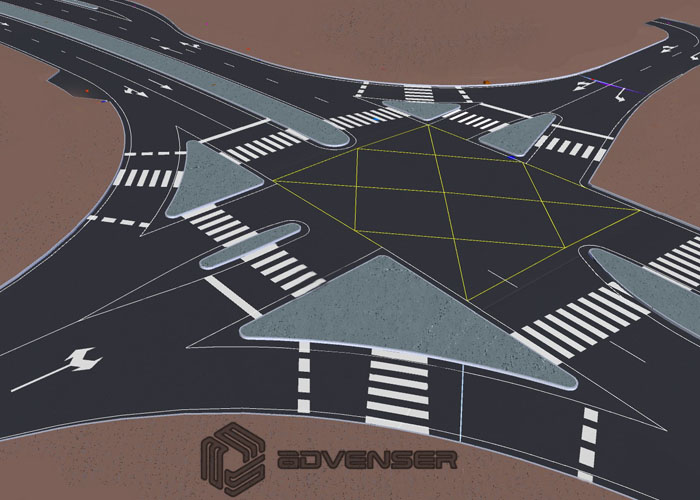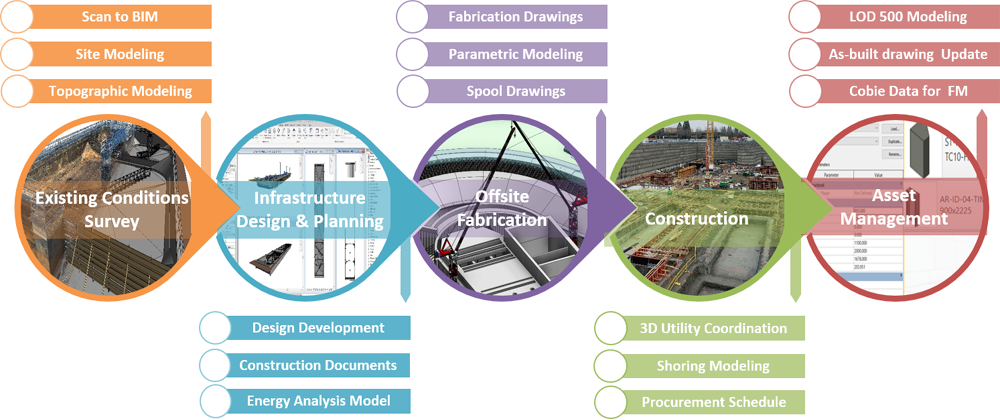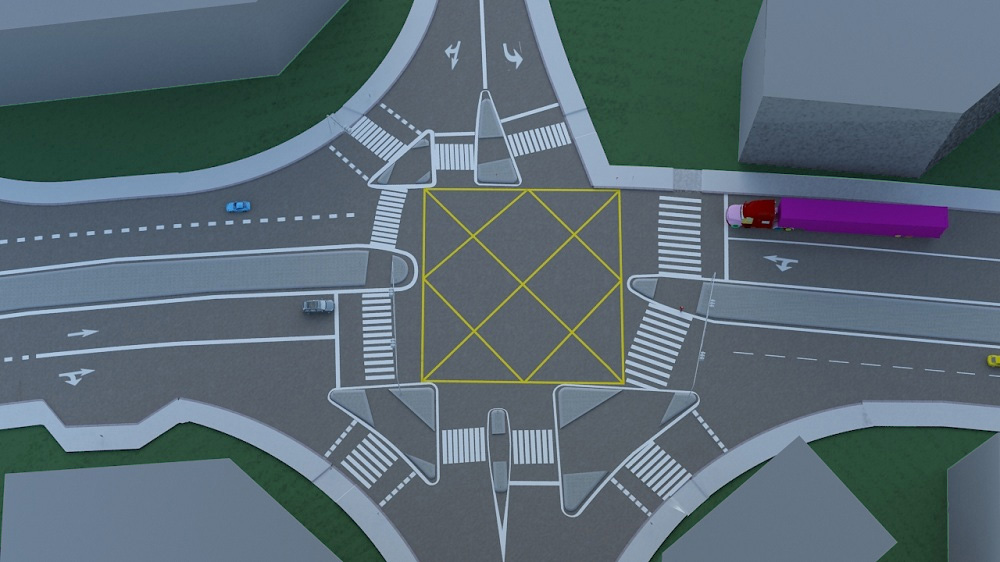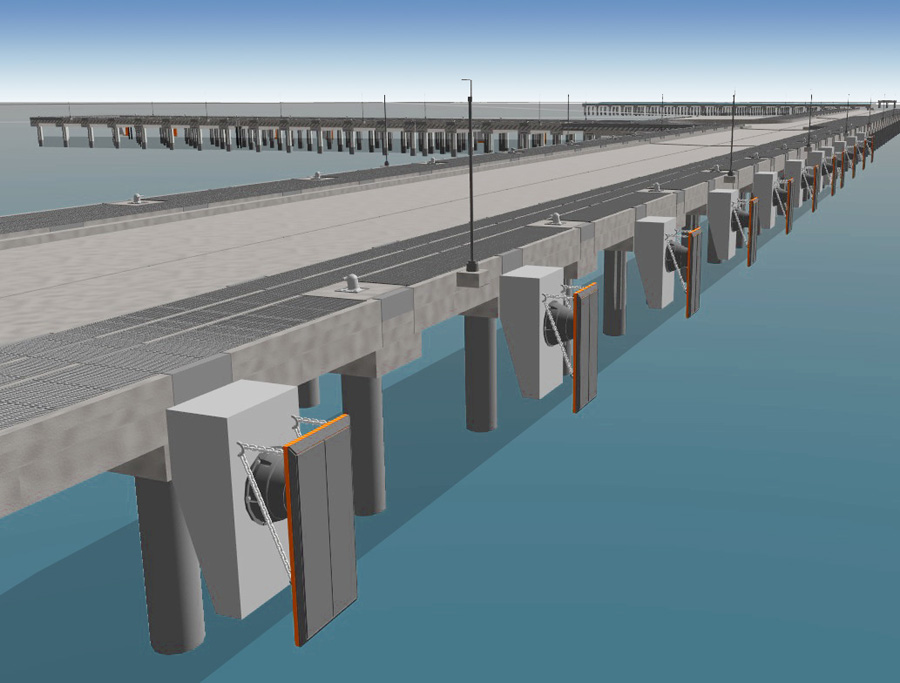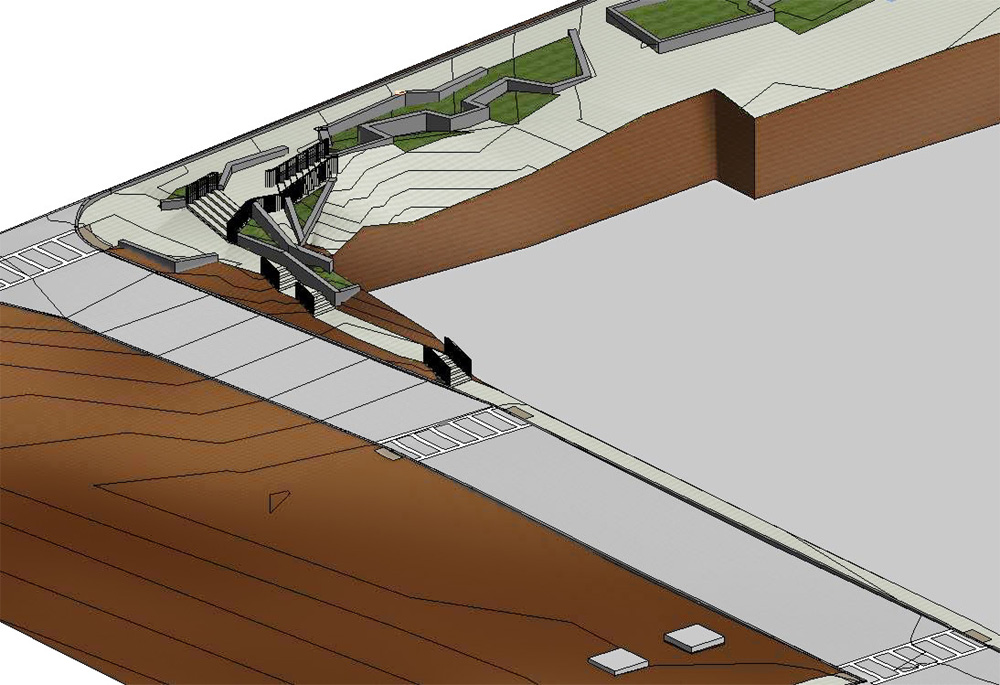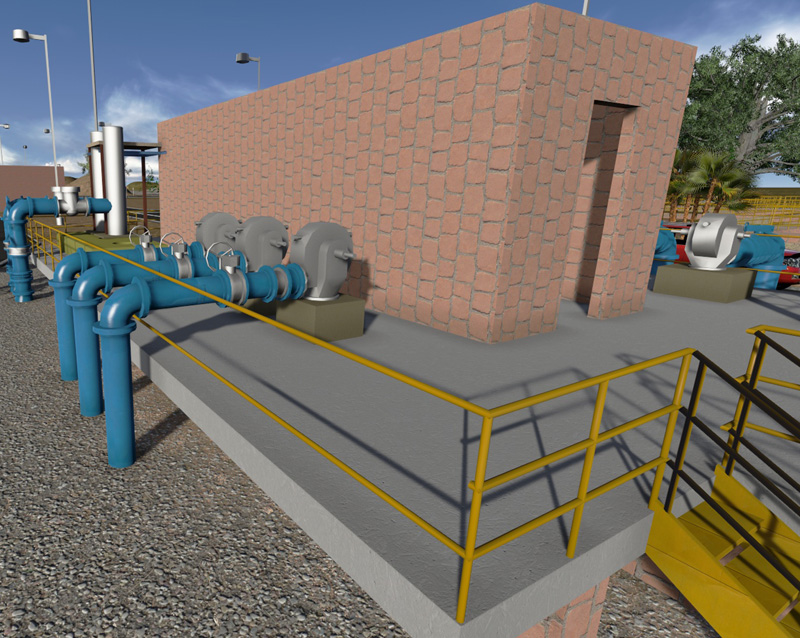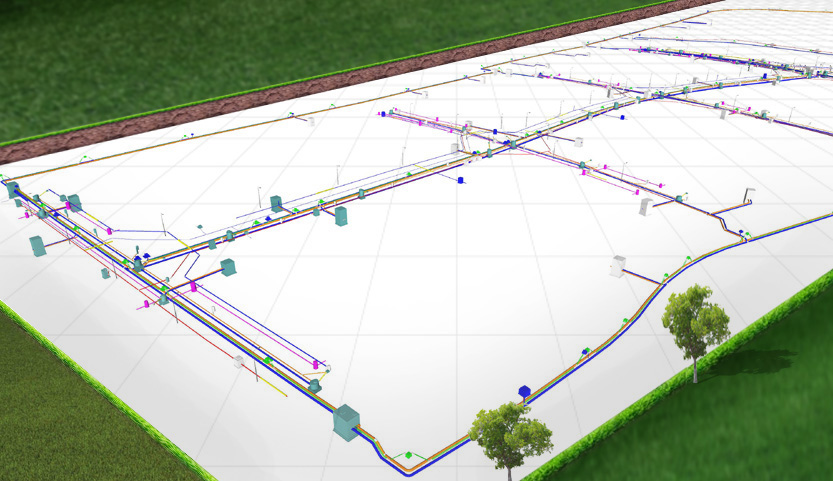BIM Services for Infrastructure and Civil
The utilization of BIM provides a shared and comprehensive understanding as well as control of the project to its diversified stakeholders. The central BIM model ensures a synchronized coordination among them with emphasis on accuracy and updation. Miscommunication and mistakes are thus alleviated from an early stage giving way to better decision making. Advenser is a one-stop solution for all your Infrastructure Modeling requirements.
Our Services:
Software Expertise:

Revit

Navisworks

Civil 3D

Tekla

AutoCAD Plant 3D
Featured Projects
Floating Facility
Dock Harbours
Cofferdams
Pipelay supports
Offshore platform structures
Off-shore structures that are built in marine as well as oil & gas industrial sectors differ significantly from other projects and require a new approach to organization of design, construction and operation especially because of space constraints, safety concerns and accessibility factors. These challenges are largely met by the adoption of BIM technology that collect, integrate and transfer data in a digital format for its repeated use at different stages of the project life cycle. Inefficient change management in one part of the structure can mean undesired adjustments to another part which can result in an increase in the overall dimensions and mass of the equipment. However engaging our team with core experience in offshore structure modeling, you can manage & resolve this issue smoothly by digitizing and integrating design & change management. Dependencies & relationships between different parts and systems are established within the single information space of the project from the planning stage. Intelligent parameterization of objects & design information, sequencing the various stages of the project improves collaboration by a great deal. The experience we have gained from a number of marine and oil rig projects guarantee that your offshore structure BIM model is accurate, updated and coordinated. Our Integrated BIM Management approach makes sure that you can plan and manage future changes by visually examining & tracing the routes of the introduced changes to the project with time and manpower minimum resources. Accurate material take offs, construction sequencing, logistics planning and installation schedules can be coordinated with perfection utilizing our BIM model. Tagging and logging of each asset component makes sure that construction and fabrication data are synchronized, stored and retrieved from a single & common digital environment and help produce on time fabrication shop drawings. The model embeds important information on all parameters of operation including standard schedules for monitoring the technical condition, cost estimates for maintenance and repairs, management of emergency situations etc. It is subsequently updated with site changes after construction handed over to the operator who in turn, utilizes this As-built model for its operation and maintenance. In short, you can utilize our expertise during all the main stages of the project life cycle – planning, design & analysis, documentation & approval, operation, maintenance as well as dismantling.
BIM has an important role to play at the time of initial land or site development. We have worked on multiple land development projects across the world incorporating topographical surfaces, buildings, retaining wall, roads, parking area, street lighting, landscaping, hardscaping etc. This detailed site model provides data continuity when subsequently prepped up and reused for building placement, underground utility development etc. Laser scan survey is a common tool used or land development to collect the topographical data of the site. Our engineers then import this data into a 3D BIM model that can be directly loaded in your software. A well rendered architectural presentation model can provide the regulators and authorities a much better understanding of the project, and can help you get construction permits and approvals. The conceptual model we generate for you during the design stage can be easily edited or manipulated. As the project moves to construction phase, we update the model with more details and this becomes the working model using which architects collaborate with other trade engineers and technical consultants. Any possible clashes are resolved among multidisciplinary engineering before construction. We also help you update the model with as-built conditions at the end of construction stage.
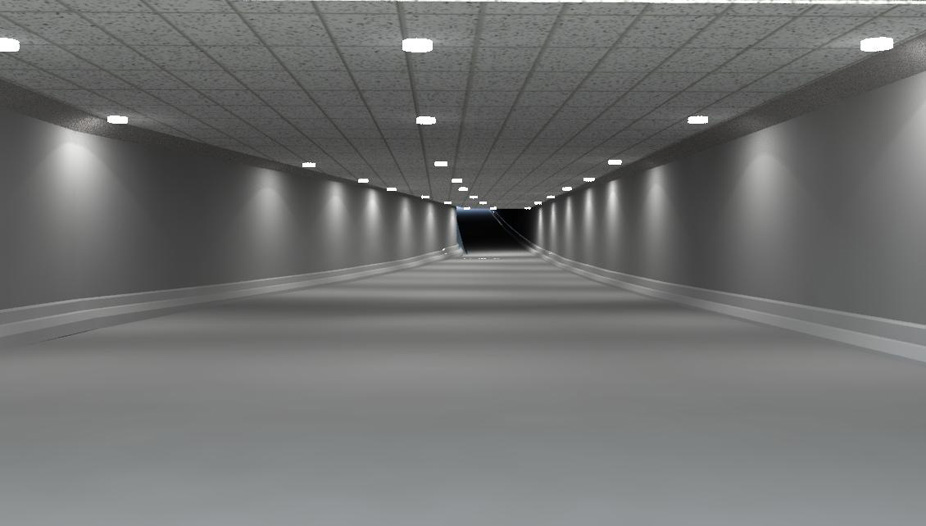
Our BIM services for Tunnel Modeling extend to:
Cut and Cover tunnels
Rock and Lining Tunnels
Utility Infrastructure in Tunnels
Barrier Elements, Retaining Walls
Portals & Trough Walls
Escape Routes and Pump Houses
Technical & Installation Rooms
All the advantages of BIM can be leveraged in the entire project cycle of tunnel design, construction and maintenance. Design and building of tunnels carry huge risks since it involves complex interconnected systems of multi-disciplinary engineering elements and complex geometries. However, utilizing BIM for tunnel modeling provides a realistic intelligent 3D representation of the components involved that interact with each other, allowing for inconsistencies to be detected and mitigated at an early stage. Our scan to BIM team can help you create 3D models of existing conditions even before excavation begins. Unacceptable and unforeseen circumstances can thus be identified and resolved early too. Advenser offers you a team of multi-disciplinary engineers with civil, mechanical, electrical backgrounds, which can create a common 3D environment for the client, whether they are a contractor, consultant or asset manager, to communicate and collaborate transparently with other stakeholders involved in the tunnel design & construction. We help your multi-trade integrated BIM model to be coordinated with all trades, detect & resolve clashes between them, create 4D & 5D construction sequences, quantity take offs, construction drawings and shop drawings. We help you to create As-built models and drawings that can be used by tunnel operators and asset managers for maintenance or renovation purposes. BIM works as a fluxing agent that enables a seamless, continual alignment between design and construction of the tunnel structure ultimately with those who manage and use it.
Apart from vertical construction, BIM is also widely used to manage horizontal structure project such as dams and bridges from conception through design, fabrication, construction, operation and maintenance. Projects of these magnitudes are often complex, as they involve multiple engineering disciplines and design elements such as complex retaining structures, power & lighting systems, underground cables & utilities, water & wastewater management utilities, as well as road & rail transportation systems. With our vast experience in diverse engineering streams and expertise in delivering an integrated & comprehensive BIM solution involving all these disciplines, you can create an accurate and interactive register of all the structures and systems. The BIM workflows that we create for you in the process enable collaborative design, planning coordination, and construction across the multiple disciplines civil, mechanical, hydraulics and electrical engineering. We provide you Integrated BIM model embedding all trade services and perform clash coordination of these trade services within the model.Our detailed model visualizations empower you to make informed and better design decisions. We support you with Model-based accurate design & construction documentation that can improve the efficiency of drawing production. Our timely & progressive BIM support in the construction stage ensure that you have accurate fabrication drawings for off-site manufacturing and fabrication. Once construction is completed, our As-built model of dams or bridges will provide you with a smooth operational and maintenance support that help you detect, locate, document & repair damages quickly.
Stormwater Management Systems
Erosion and Sedimentation Control
Water Distribution Systems
BIM plays a critical role in simplifying the technical complexity involved in design & construction of water treatment plants, and increasing the efficiency of operation & asset management of completed utilities. The accuracy of our BIM services enable engineers, technical consultants, planning boards and contractors engaged in water utility projects to explore and implement innovative designs and ‘what-if’ scenarios to test and simulate real-world performance. This enables the stakeholders involved in developing a better understanding, monitoring and control of procurement schedules (4D) and project cost (5D), evaluate environmental impacts, and share accurate visualizations of various stages of the project from design to construction. Utilizing a BIM like ours ensures that you have a single, central BIM model as the source of interaction & collaboration among supply chains, water authorities, multiple engineering disciplines and contractors that continues to evolve and more detailed throughout the entire project cycle. Project teams can explore and optimize designs, develop a comprehensive understanding, communicate, review & revise various working systems in seamless collaboration. Our BIM engineers are well-versed in BIM modeling of pipelines & underground utilities as well as their clash coordination with other mechanical, plumbing and civil elements in water and wastewater network. Watersheds, dams, storm water facilities, drainage, water treatment plants are modeled and integrated into the coordinated BIM model. Our value addition services, however extends beyond design & construction phases. Throughout the project cycle till operation we make sure the model is synchronised and updated periodically & intermittently to capture the as-built updates. The detailed information embedded in the BIM model can be accessed by asset managers and operators to repair & maintain the various mechanical, structural & electrical systems with pinpoint accuracy.
Modern day Stadiums are complex structures that are designed and built with emphasis on sustainability, aesthetics as well as audience comfort and house a string of facilities such as restaurants, car parks, swimming pools, shopping outlets and other commercial facilities. Often extensive lighting, power, mechanical and plumbing systems interact with structural systems. Offsite manufacturing of structural, members are involved for which we provide precast detailing & structural steel detailing services. Coordination and collaboration among these varying trades are often quite a challenge and an experienced multidisciplinary BIM team such as Advenser has a major role to play. Our BIM team provides a common data environment in the form of an interactive 3D model to collaborate between all engineering disciplines design to construction. We make sure that all intricate trade details are integrated into one information-packed central 3D model. Greater collaboration means greater accuracy and fewer design errors. Clashes detection & resolution between the electromechanical and structural systems is conducted. The model embeds detailed information such element quantities, timelines and costs for all project participants. Our structural and Precast BIM teams extract advance procurement quantities and fabrication drawings for offsite prefabrication. Our services do not end with the winding up of construction but extend to as-built modeling and documentation as well. We also generate specific BIM data such as COBie which is a prerequisite for efficient Facility Management We realize the importance of sustained information flow in the efficiency of operational stage and ensure that the model is populated with accurate and comprehensive details throughout the design and construction phase.
Public Facilities Development
Parks and Stadium
Power Distribution and Transmission Systems
Rail and Road Networks
Bridges and Walkways Piping
Telecom Structures and Cabling
Electric Cables and Telecom Lines
BIM has revolutionized the way underground and overhead utilities are designed, constructed, operated and renovated, like never before by blowing the fog of uncertainty often associated it. It seamlessly and dynamically integrates geological parameters and construction data into comprehensive 3D digital model. The topographic data, location, coordinates and other details of underground utilities such as piping, electric cables and telecom lines can now be visualized and handled in one Common Environment and this serves a powerful and intuitive tool for all stakeholders involved. The Underground BIM model that we develop could be shared and reviewed by engineers, planners and other professionals involved in the project and utilized for many aspects of local planning and future urban designs. We provide coordinated and clash free models of various underground utilities such water mains, wastewater pipes, natural gas pipeline, telecom, electricity distribution, fiber optics, storm drains etc. Once design is completed, we update the working model to LOD 400 Fabrication detailing for offsite and workshop fabrication. We ensure that your BIM model is accurate, live and up-to-date from design to construction. You can absolutely rely on our BIM model for information to guide you with future risk analyses and assessments. It can act as reference point relocating an existing service, or for aligning a new utility without disrupting existing services. Appropriate risk mitigation steps may be adopted by closely tracking the information gathered during construction phase and comparing it against the pre-construction estimates. On project completion, as-built documentation of the project can be updated into the model and used for future planning and decision making.


